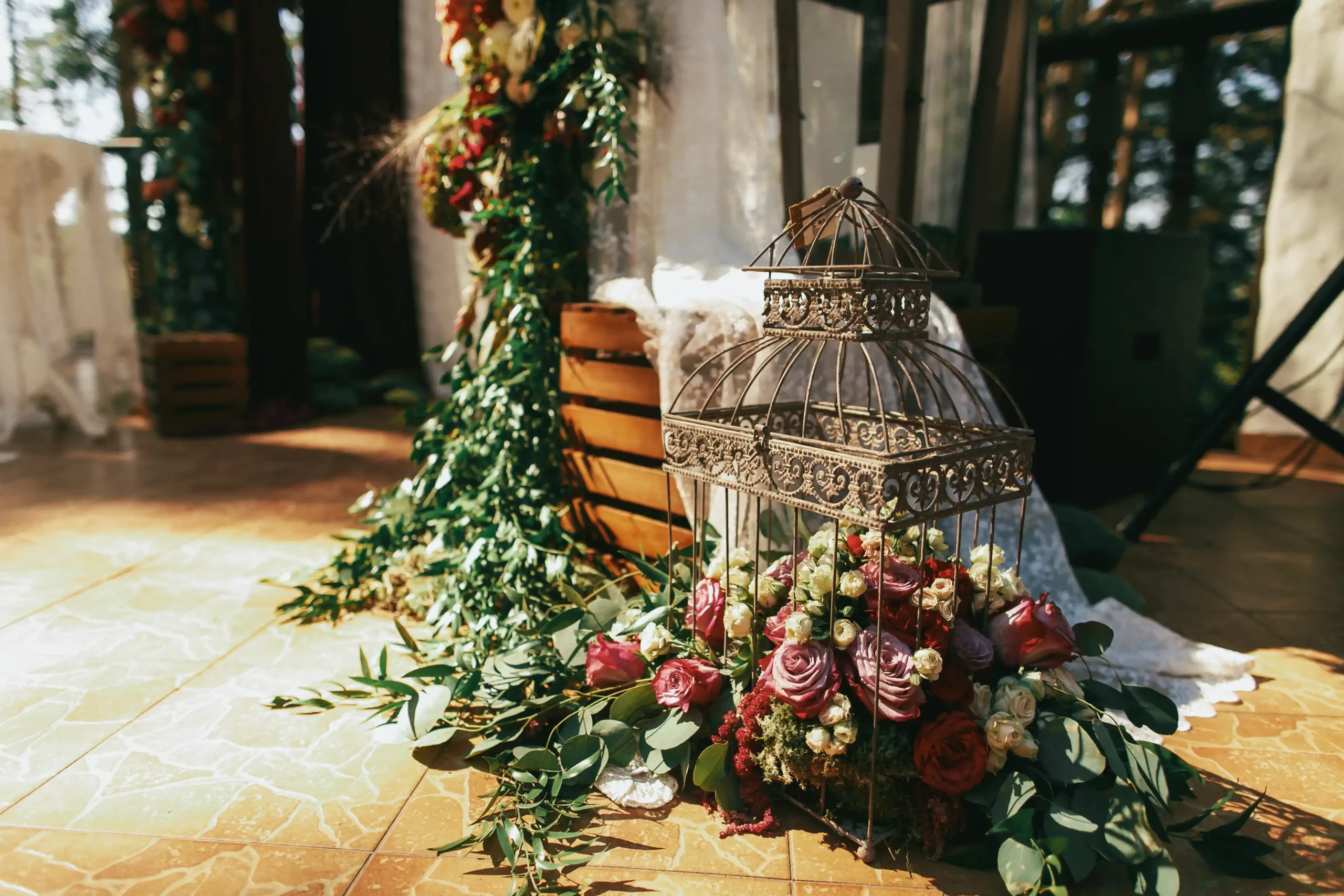Flower Symbolism in Weddings: What Each Bloom Represents

Find out what is hidden in the meaning of popular wedding flowers. Discover how the symbolism of flowers is applied in wedding decorations and why wedding flower, fresh and artificial, are selected by couples on the day of their wedding.
The wedding has always been about flowers. Whether it is bridal flowers or a classy centerpiece, every flower holds a more profound meaning beyond its beauty. Mostly, couples do not choose wedding flower based only on color and fragrance but also on the meaning they represent. Both fresh flowers and artificial wedding flower may be a great choice, but by learning the secret symbolism, you can use the arrangement and decoration of your wedding to your advantage.
In this blog, we will discuss the symbolism of the common wedding flowers and how you can utilize them in your wedding decoration.
Why Flower Symbolism Matters in Weddings?
Wedding flowers are not just decorations; they are a story. Many cultures have, over the centuries, attributed certain flowers to love, purity, loyalty, and prosperity. You can make your big day unique by choosing flowers that represent your values and feelings.
To be more specific, roses can symbolize passionate love, and lilies can represent purity and devotion. Decorating a wedding stage, creating the bridal bouquet, and choosing wedding flowers that do not wilt quickly, or opting for artificial wedding flower, can make the symbolism of each flower even more profound and personal in your wedding decorations.
Popular Wedding Flowers and Their Symbolism
1. Roses Eternal Love
The most famous wedding flowers are roses. They symbolize romance, passion, and eternal love. Red roses are a symbol of passion, white flowers represent purity, and pink flowers signify admiration and happiness. The decoration of wedding flowers with roses immediately brings beauty and love.
Best use: Wedding flowers, stage decor, and table arrangements.
2. Lilies – Purity and Devotion
Lilies are also popular due to their refined appearance and association with purity, virtue, and devotion. White lilies are especially perfect for brides who would prefer to appear innocent and devotional with their wedding flowers.
Best application: Ceremony arches, aisle decoration, and altar decoration.
3. Tulips – Happiness and Prosperity
Tulips are the flowers of perfect love, happiness, and prosperity. They are elastic and come in a variety of colors, which makes them suitable for spring weddings. Tulips in yellow are a source of happiness, and those in red symbolize passionate love.
Best use: Table arrangements and bed-bouquets.
4. Orchids – Luxury and Elegance
Orchids represent power, opulence, and exclusive beauty. They are also employed in contemporary flower arrangements at weddings to give them a stylish and oriental appearance. Orchids are a classic choice for fresh flowers or wedding flowers, adding elegance to any wedding theme.
Best application: Cascading bouquets, reception arrangements, and hanging arrangements.
5. Peonies- Good Fortune and Romance.
Peonies are very popular among brides due to their romantic, flowery appearance. They symbolize wealth, luck, and a good marriage. Their petals are soft, and their pastel coloring is perfect for matching dreamy wedding themes, such as bridal bouquets and centerpiece arrangements.
6. Carnations -Admiration and Affection.
Carnations are cheap and not worthless. They represent respect, appreciation, and great affection. White carnations are a symbol of pure love, and pink carnations typically symbolize the love of a mother, which is why they can be used to celebrate family-friendly weddings.
Best use: Corsages, boutonnieres, and table arrangements.
7. Baby’s Breath – Innocence and Everlasting Love
The simplicity and elegance of baby breath have made it one of the favorites at weddings. As a filler flower in arrangements and compositions, it represents innocence and love that is everlasting.
Best use: Wedding arches, aisle runners, and bouquets.
Fresh vs. Artificial Wedding Flowers
One of the most significant decisions you have to make when it comes to planning your wedding flower decoration is whether to use fresh or artificial flowers.
Fresh Wedding Flower
Nature, fragrance, and beauty.
Seasonal availability
Symbolism is more realistic.
Artificial Wedding Flower
Long-lasting and reusable
Weather-proof (best suited to outdoor weddings)
Cheap enough to do big decorations.
It is common practice today among couples to combine both fresh flowers in the bridal bouquets and artificial flowers in the stage/reception decor. Such a strategy is both realistic and practical.
How to Incorporate Symbolism into Wedding Flowers Decorations?
Choose a Theme: Discover a match between the symbolism of flowers and your wedding theme. An illustration of this would be that a romantic theme would be built around roses and peonies; a modern luxury wedding would be built around orchids.
Blend Colours and Senses: Take one bunch of flowers and mix it with a blend of flowers to create a bouquet that tells your love story, such as pairing white lilies (purity) with red roses (passion).
Personalize Decor: Use flowers that hold meaning for the person, such as the bride’s favourite flower or culturally significant flowers.
Mix Fresh and Artificial: Large Displays Use artificial wedding flowers, but private details, such as the bridal bouquet, should be made with fresh flowers.
Conclusion
Wedding flowers are not just decorations, but also storytellers of love, hope, and promise. Passion, purity, or elegance, whichever flower you use, it can symbolically add meaning to your wedding day.
Fresh or artificial wedding flower decoration: You can choose the kind of wedding flower decoration to match your love story. The right mix will ensure that your wedding flowers not only decorate the room but also create a memorable emotional effect.